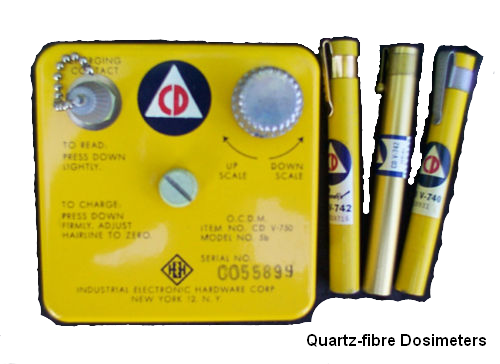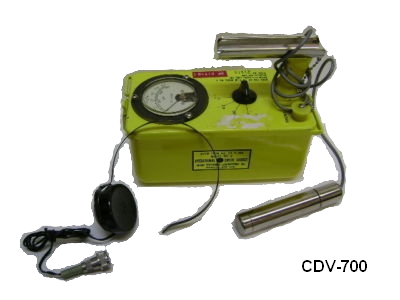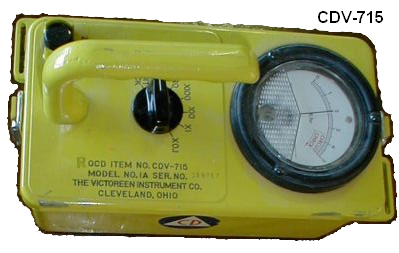|
|
 |
|
First of all, a word of warning. On internet auction sites you Many of the advertised devices are quartz-fibre dosimeters, which measure accumulated dose. They are very insensitive, and detect only gamma-radiation, and if you are anywhere near having reached the maximum dose you are going to be very sick indeed and may well die from radiation sickness!
You need to be aware of what you are buying and why. The device that I am about to describe is a sensitive ionisation chamber instrument that will detect alpha, beta, x-ray and gamma-ray radiation. Without calibration it will not tell you how much radiation there is, but it will detect the radiation from an alpha source of less than 1kBq. The ionisation chamber is actually a very simple device. They are also very common, manmy homes will have one inside a smoke detector. An ionisation chamber consists of two electrodes, the anode and the cathode. In its simplest form one of these forms an outer cylinder (it actually doesn’t matter which in theory, but for practical purposes which is which must suit the particular design). In our case the outer is the anode, and a simple stiff wire is the cathode. It must be insulated well from the anode, glass is suitable, or in the version described here, a short length of teflon tubing. The anode is held at positive potential with regard to the cathode. The chamber contains a gas, in our case air, the reason it is open at one end will shortly become obvious. The difference in potential between the anode and cathode is then measured by suitable circuitry, in our case the electrometer circuit described elsewhere on this site is used. How does the ionisation chamber detect radioactivity? When ionising radiation, which can be alpha particles, beta particles, gamma rays or x-rays enters the chamber, it causes one or more gas molecules to split into ions. Each split In the video clip you can see the ionisation chamber, which you may recognise as a baked bean can, this is the anode. In the centre, and insulated from it by a small Teflon tube, is the cathode which is simply a piece of stiff, tinned copper wire. The circuitry such, as it is, is mounted on the bottom of the can on a piece of copper clad board which forms the base. |
| [Home] [Famous hams] [Links] [Non radio] [Circuits] [Xtal calibrator] [Electroscope] [Ionisation chamber] [Software] [News] [WX sats.] [National societies] [Special Interest] [NBTV] [Safety] [Radio museums] [Amateur science] |

















 will find hundreds of things described as “Geiger counters”. Very few of them actually
will find hundreds of things described as “Geiger counters”. Very few of them actually  are, and of those that are very few are of much use! In many cases if they do give a reading, you are well on the way to suffering radiation sickness and even death, they were designed to be used in the aftermath of a nuclear explosion! Of those that are true Geiger counters, very few will detect alpha radiation
are, and of those that are very few are of much use! In many cases if they do give a reading, you are well on the way to suffering radiation sickness and even death, they were designed to be used in the aftermath of a nuclear explosion! Of those that are true Geiger counters, very few will detect alpha radiation
 The remaining two groups of devices may be divided into true Geiger counters and those which use an ionisation chamber as the detector. Above left you can see a true Geiger counter and to the right an ionisation chamber based device. To the left is a relatively modern Russian Geiger counter. The other devices are all a lot older.
The remaining two groups of devices may be divided into true Geiger counters and those which use an ionisation chamber as the detector. Above left you can see a true Geiger counter and to the right an ionisation chamber based device. To the left is a relatively modern Russian Geiger counter. The other devices are all a lot older. causes an ion pair, one of which carries a negative charge, and the other an equal but oposite positive charge. The positive ions are attracted by the negatively charged cathode, and the negatively charged ions are attracted to the positively charged anode. This causes an umbalance in the electrical state which is measured by an electrometer.
causes an ion pair, one of which carries a negative charge, and the other an equal but oposite positive charge. The positive ions are attracted by the negatively charged cathode, and the negatively charged ions are attracted to the positively charged anode. This causes an umbalance in the electrical state which is measured by an electrometer.